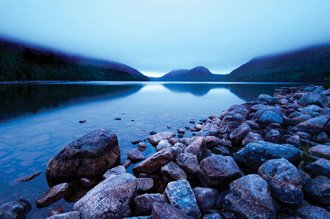Composing Great Landscapes
| SCOTT KELBY The next time you pick up a great travel magazine that features landscape photography or look at some of the work from the masters in digital landscape photography, like David Muench, Moose Peterson, Stephen Johnson, and John Shaw, take a moment to study some of their wonderful, sweeping images. One thing you'll find that most have in common is that these landscape shots have three distinct things: (1) a foreground. If shooting a sunset, the shot doesn't start in the waterit starts on the beach. The beach is the foreground. (2) They have a middle ground. In the case of a sunset shot, this would be either the ocean reflecting the sun, or in some cases it can be the sun itself. And lastly, (3) it has a background. In the sunset case, the clouds and the sky. All three elements are there, and you need all three to make a really compelling landscape shot. The next time you're out shooting, ask yourself, "Where's my foreground?" (because that's the one most amateurs seem to forgettheir shots are all middle and background). Keeping all three in mind when shooting will help you tell your story, lead the eye, and give your landscape shots more depth.
|
EAN: 2147483647
Pages: 226
